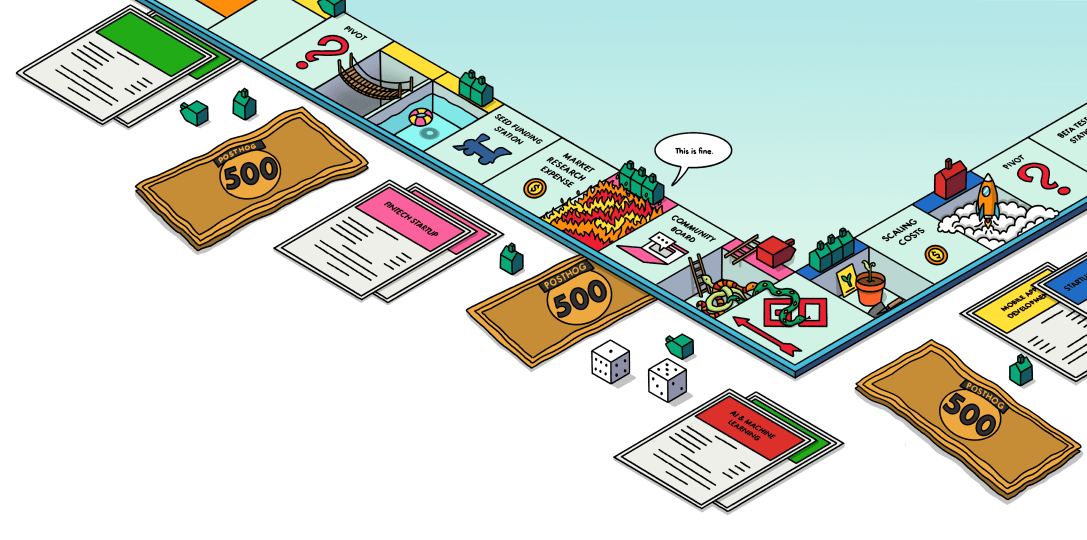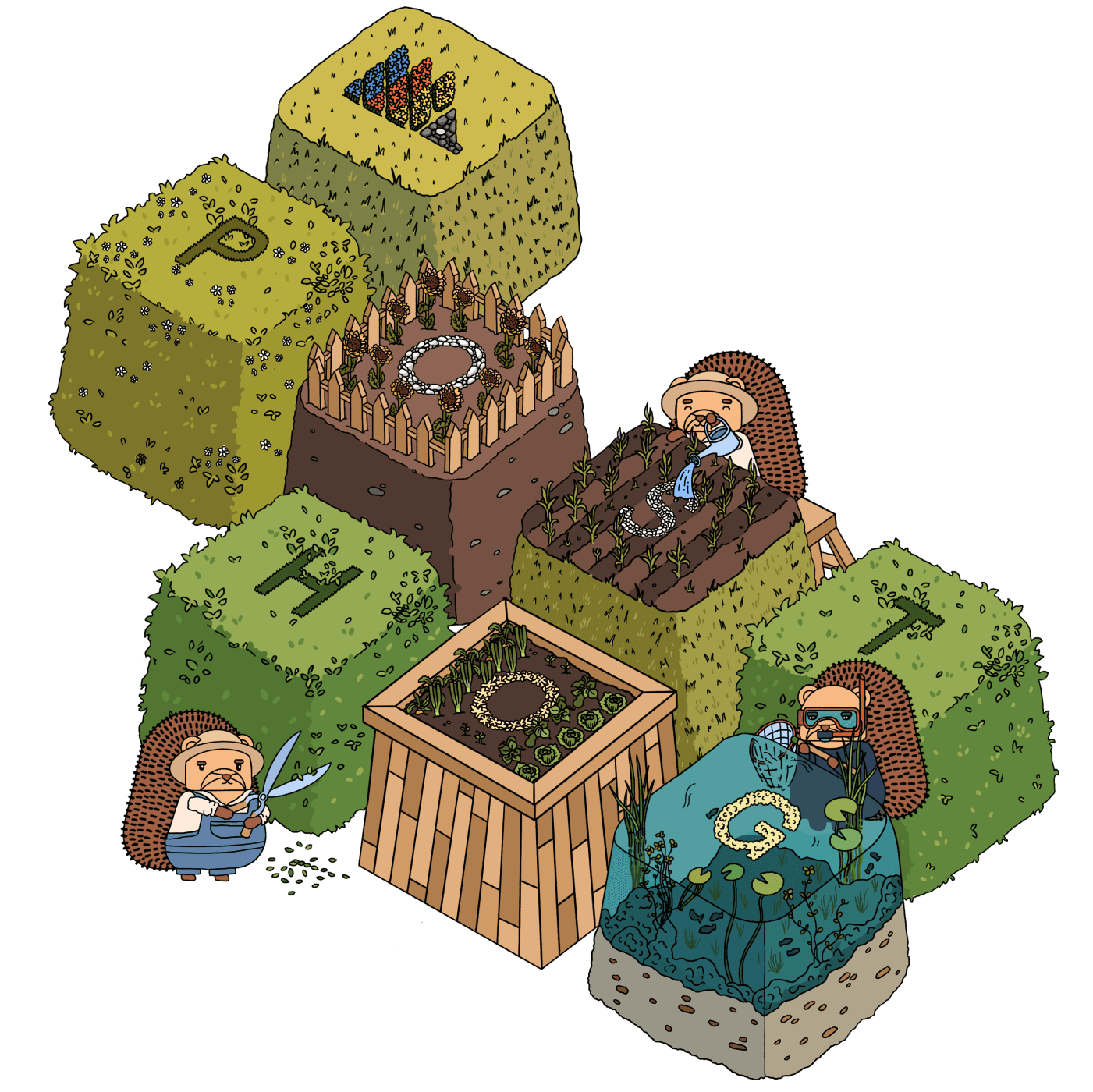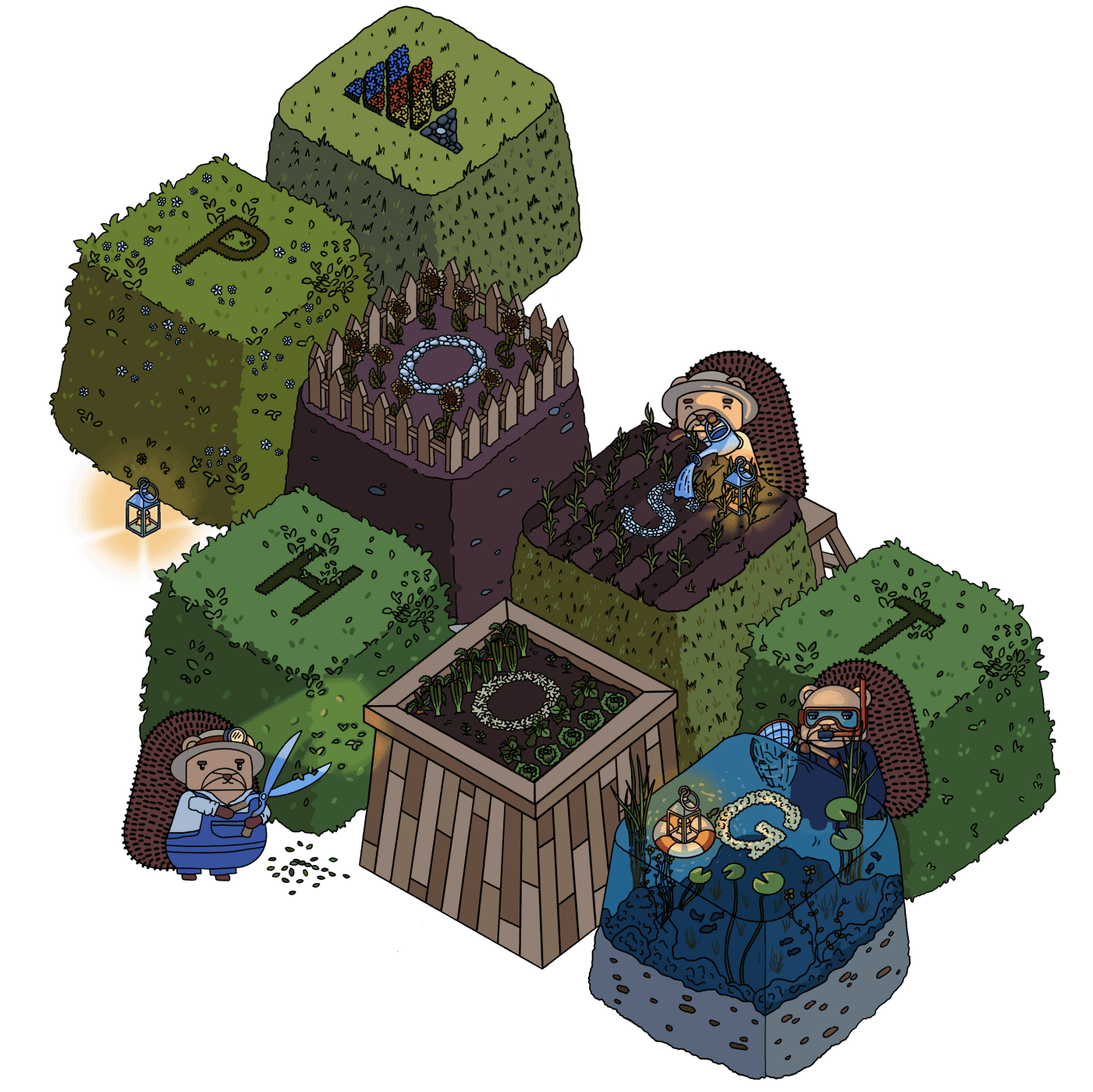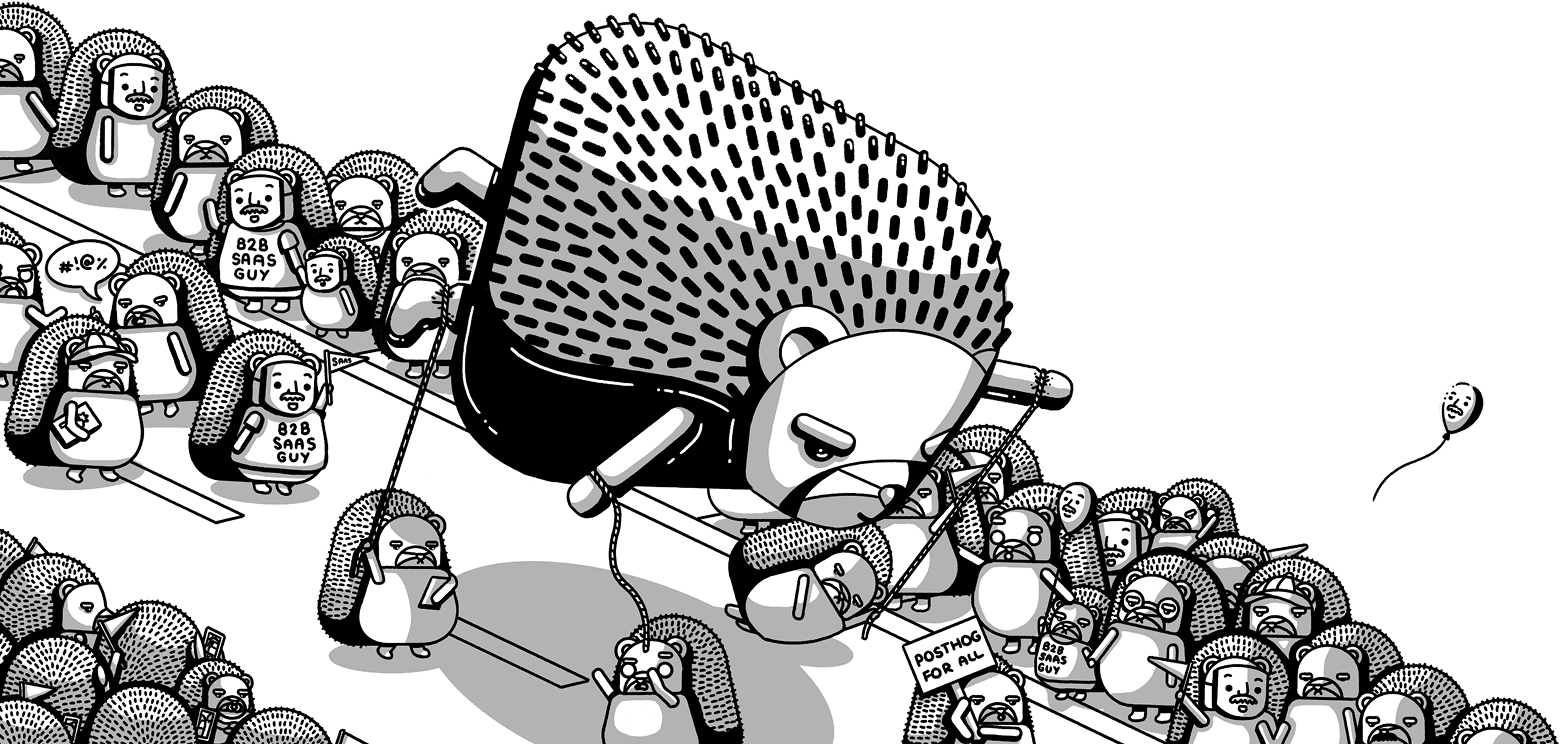
43 things we've learned about hiring at PostHog
Advice for startups (and most companies, frankly)
We talk to a lot of founders these days about hiring, and find ourselves saying many of the same things. So we thought we’d compile them all into one big ol’ list.
Most cool companies have amazingly boring job ads. It is very easy to differentiate yourself by being mildly interesting.
Cut your list of requirements in half. Then halve it again. Think about what you would do if you were applying.
Yes, applicants will ignore the list of requirements and bring a ton of ‘I can do that’ energy. No, you cannot do anything about this.
Do not freestyle your interview process. Decide it up front, then (shockingly) tell candidates what the process is. No, you will never get every single piece of information you want. Don’t waste 80% of time getting the last 20% of info.
Sharing the salary up front is a great way to screen out expensive people early. You are not that great a negotiator.
You are not going to trick the presumably-clever people you want to hire with a list of bullshit benefits. Stop it.
Job ads are more important than blog posts, so write them like one.
Tell people who the role is notfor – it increases enthusiasm with the right people.
Get people to do actual work with you for a day. A SuperDay gives us the strongest signal, and helps to build excitement with a candidate you like.
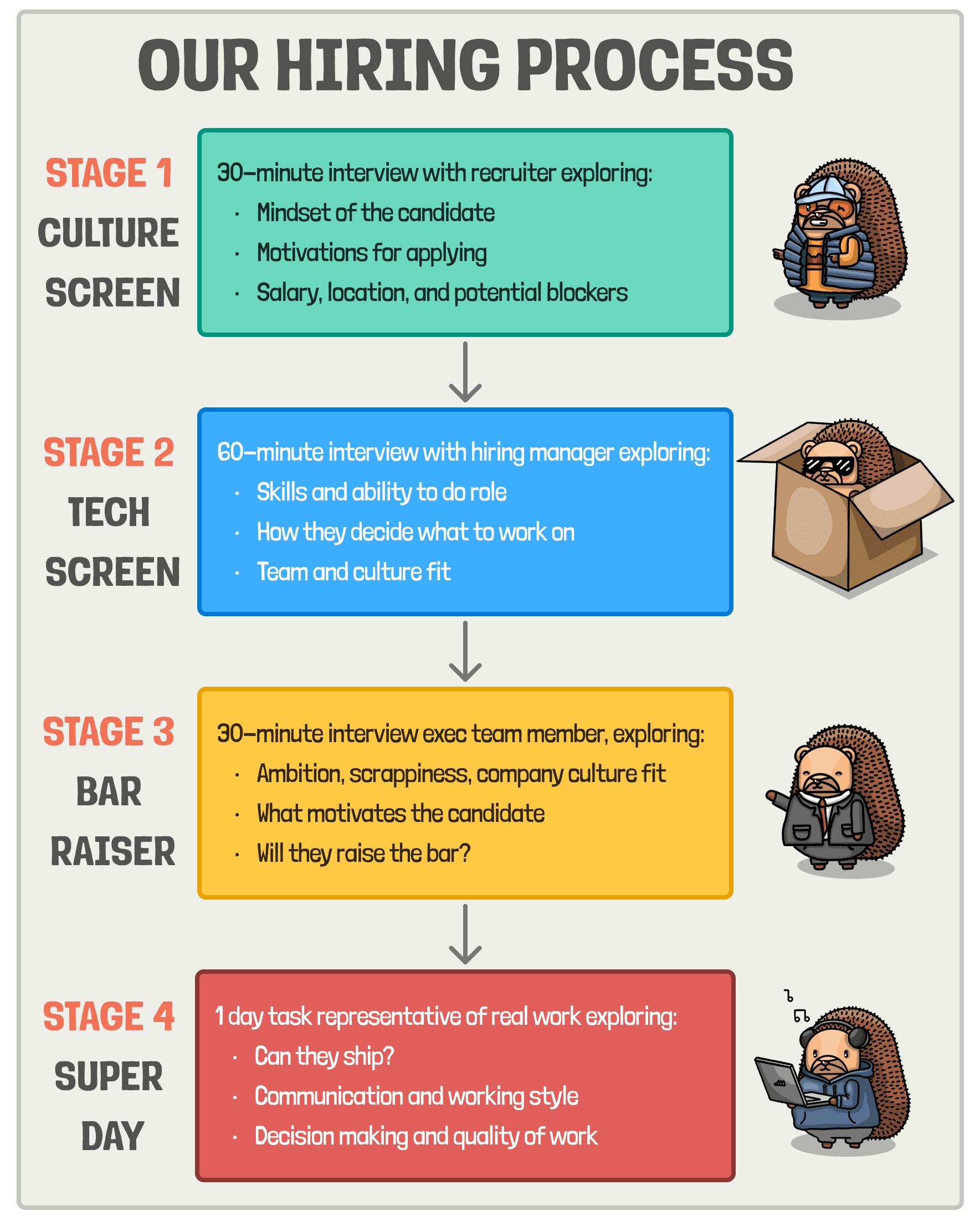
If someone doesn’t want to do a SuperDay, that’s totally fine! It just means they’re not as excited to work for us as other places.
More generally, it is OK for people to not want to work at your company. Better that 10% of people are extremely interested than 70% are mildly intrigued.
Take home tasks are pointless in an AI world.
Pay people for their time, dammit.
You have too many stages in your process, probably. 2 hours of interviews and a SuperDay is enough for us.
At the beginning and end of a process, you are in sales mode – the whole interview process is not ‘impress me’ the whole way through.
We have never taken references. They’re too easy to game, and a weaker signal than just doing some work together.
Having an extremely transparent handbook is basically cheating.
There are a bunch of weird ways to find your early hires, especially when you have no brand – people who star your repo, post cool projects on HN etc.
Posting ads on job boards like LinkedIn etc. is a waste of time. Be extremely targeted. HN’s ‘Who’s hiring?’ is our second-best source of applicants (after referrals), followed by our own website.
That said, getting social referrals via your team posting on LinkedIn works well.

If recruitment is important to you, do it in house. Yes, there are lots of benefits to working with agencies. But outsourcing recruitment early on is like outsourcing your product, except here the product is your culture.
Don’t take shortcuts because you’re tired. It’s better to have nobody than the wrong person.
Be prepared to change course. This can be as extreme as going ‘actually we don’t think we should be hiring for this role at all’. Don’t hire someone amazing into the wrong role and hope it will work itself out.
If you tell the world what your teams are working on, you’re more likely to get more relevant applicants who say ‘I’d like to work on this’.
We rate candidates 1 (Definite no), 2 (No), 3 (Yes), 4 (Definite yes). A mix of 4s and a 2 is better than 3s across the board. Be very wary of 3s – most of the time they mean ‘no, but I don’t want to say it’.
90% of culture is getting hiring right in the first place. You cannot make an uncracked engineer cracked.
Optimism is a massively underrated attribute, in all roles.
When hiring ops people, it must be extremely easy to ask them for help with the smallest of things. Us ops people like doing this stuff.
Recruiters are not ultimately responsible for hiring, managers are. If you’re struggling to hire but are just sitting there passively waiting for interviews to land in your calendar, that’s on you.
Big job cuts at other companies don’t make it easier to hire great people.
Hire fewer people in general. Excess hiring is often a sign that you haven’t worked out some part of your culture.
Your choice of applicant tracking system, much like your IDE, doesn’t matter.
Most of your hiring metrics are vanity metrics. Don’t hide behind a conversion funnel, do good work consistently on the inputs.
We love hiring people who were the sole person holding their crappy company or team together.
Not all outbound is equal. Cold emailing a bunch of people (especially as a recruiter) isn’t the same as a warm, relevant and targeted DM from a founder. Do the latter, but not the former.
Special bonus section – for applicants
If you’re applying for a job right now, you will probably not like this stuff (especially if you’re a HN enjoyer). I share this with you in the cynical hope of helping you land a job you want, as someone who has been on both sides of the equation:
Y’all write way too much. Brevity is your friend when it comes to applying for jobs.
On the flip side, yes, cover letters still matter. When you get 500 applications for a job, you’re still looking for ways to easily say ‘no’ to people.
Make it obviously personalized. Yes, we are still pretty good at spotting AI-generated stuff.
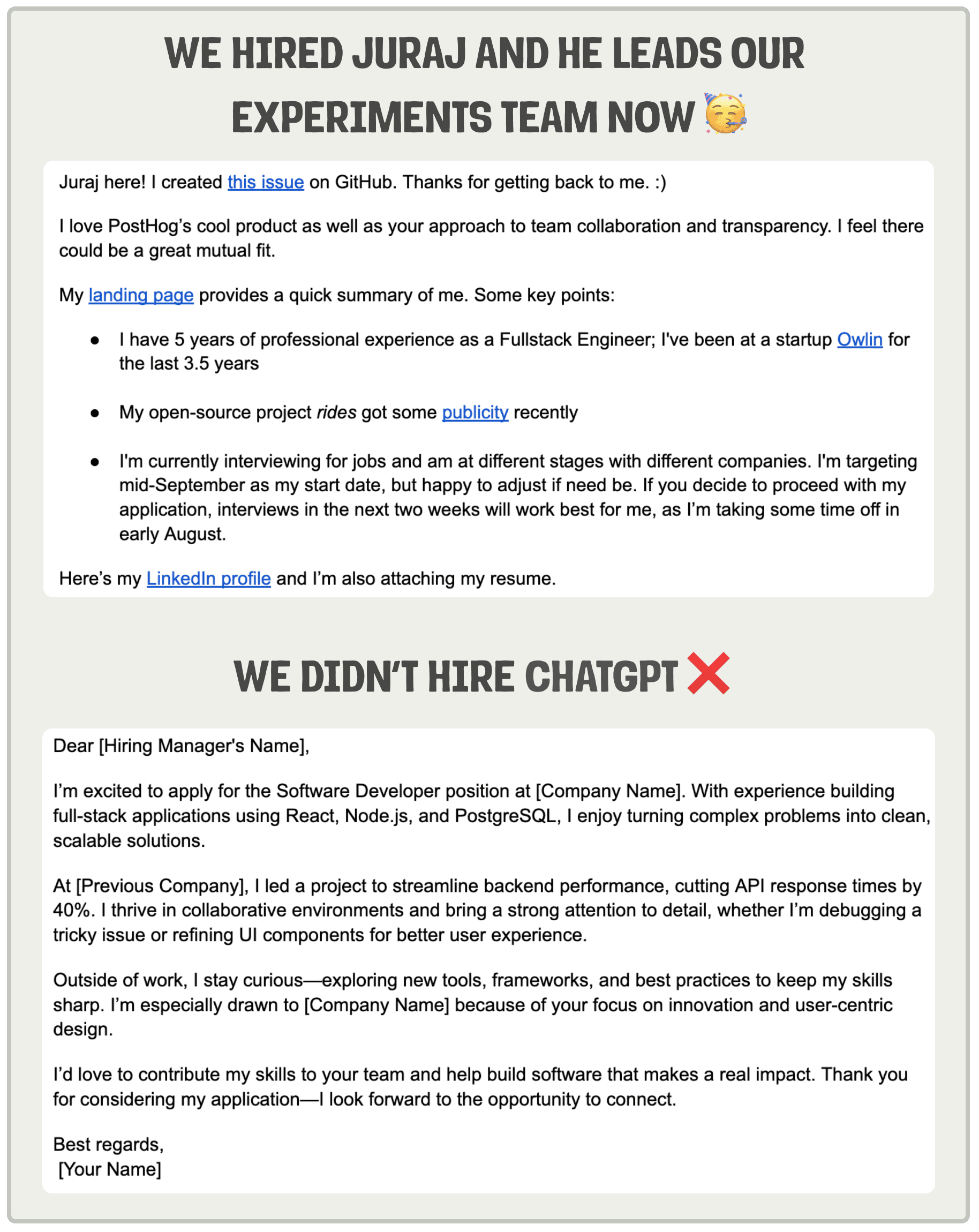
Make your resumé easy to read. Lighten the cognitive load on the person screening.
Getting a warm referral still works best, unfortunately. Randomly adding someone on LinkedIn doesn’t count.
You won’t get the feedback you want, even from the companies that try really hard at this (because it’s not worth it to them, frankly).
Learn to ask good questions. Don’t be overly deferential to your interviewer - smart questions are another signal of a good candidate.
Make you sure you understand what share options are and how they work. $100k options with great terms > $500k options with bad ones.
Subscribe to our newsletter
Product for Engineers
Read by 100,000+ founders and builders
We'll share your email with Substack

